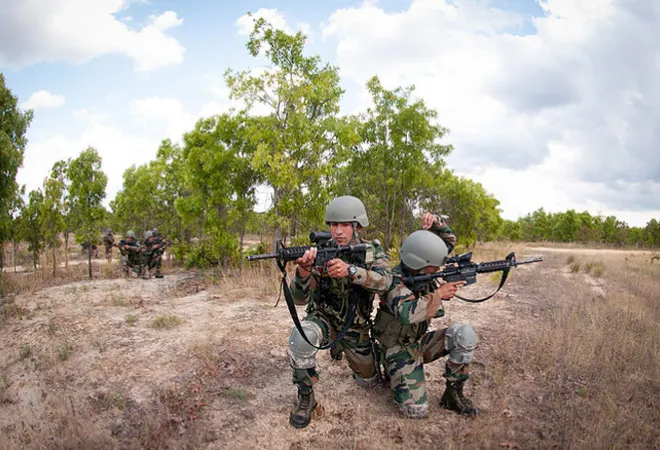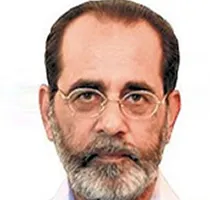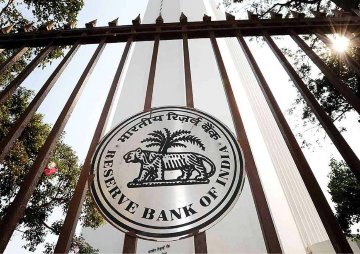
The Pulwama – Balakot crisis appears to be winding down with the two High Commissioners having returned to their diplomatic posts in Delhi and Islamabad (they had been withdrawn for ‘consultations’ to signal growing tensions post-Pulwama), talks on Kartarpur have been taking place and the firings across the LoC have reduced, indicating a return to status quo. Amid the claims and counter-claims surrounding the Balakot air strikes on 26 February and the Pakistani riposte the following morning, the Modi government has been emphasising that it has established a new normal. But has it? And if so, what does the ‘new normal’ convey? Because one thing is clear – another terror strike involving Pakistan based terror outfits will take place, sooner or later.
Surgical strikes to Balakot
On 18 September 2016, a terrorist attack at an army camp near Uri by Pakistan based jihadi militants left 19 Indian soldiers dead. The Modi government promised retaliation at a time and place of its choosing. On 29 September, the government announced it had undertaken ‘surgical strikes’ across the Line of Control (LoC) and destroyed a number of terrorist launch pads and also killed a number of militants who were present and would have been infiltrated into India. Details about casualties and targets remained sketchy. Pakistan denied that any ‘surgical strikes’ had taken place.
The political message was that the Modi government had shifted from a policy of ‘strategic restraint’ (since India refrained from any kinetic action after the 26 November 2008 terrorist attack in Mumbai) and would now respond militarily, in keeping with its ‘muscular’ policy. Since Indian anger was assuaged with the retaliation and Pakistan maintained that nothing had happened, tensions receded.
The reality is that similar shallow cross-border incursions across the LoC had been undertaken earlier too but without publicity or the label of ‘surgical strikes’.
The reality is that similar shallow cross-border incursions across the LoC had been undertaken earlier too but without publicity or the label of ‘surgical strikes’. When there was a particularly heinous action such as beheading or mutilation of an Indian soldier, equivalent retaliation sent a message and because there was no publicity, the situation defused leading to a period of restraint. The 2016 ‘surgical strikes’ however raised the bar.
The Pulwama attack killed 40 CRPF soldiers and coming two months before the elections demanded a more dramatic and ambitious response. Hence Balakot. Two new markers were laid with the Balakot air strike. For the first time after 1971, the Indian air force crossed into Pakistani airspace for an offensive operation. Second, the target chosen was not in POK (which is disputed territory under illegal occupation of Pakistan) but in Pakistan, Khyber Pakhtunkhwa province.
Two new markers were laid with the Balakot air strike. For the first time after 1971, the Indian air force crossed into Pakistani airspace for an offensive operation. Second, the target chosen was not in POK, but in Pakistan.
However, public pronouncements on 26 February also conveyed a message of restraint, describing the action as a ‘non-military’ strike (at a JeM training camp and not at a Pakistan military facility); ‘pre-emptive’ action based on intelligence that a large number of terrorists were present at the site planning more attacks (not retribution or vengeance). It was stated that Mirage 2000 aircraft were used to ‘penetrate deep inside’ Pakistan and precision bombing ensured no civilian casualties. All aircraft returned safely. No details regarding the kind of ordnance used or the number of casualties or any other ‘post strike damage assessment’ were forthcoming.
This time, Pakistan acknowledged that an intrusion took place but added that Pakistan had responded by scrambling its fighters and the Indian aircraft had withdrawn dropping their ordnance in a forested area without causing any casualties. Pakistan promised retaliation. The following morning, Pakistani aircraft entered Indian airspace, were intercepted and in the dogfight, an Indian Mig 21 was downed with the pilot (Wg Cdr Abhinandan Varthaman) coming down in Pakistan. Amid growing international calls for restraint and phone calls between US, Saudi and UAE officials and the authorities in Delhi and Islamabad, the pilot was handed back within 60 hours.
India claimed that its Mig 21 had downed an F-16, a claim denied by Pakistan. Pakistan denied using F-16s as it would be in violation of end-use assurances that limit its use to counter-terrorism and defensive operations. However Pakistan had bought 13 F-16s from Jordan in 2017 and it is possible that these were used because part of an AMRAAM missile (which is carried by F-16s) was exhibited by Indian authorities.
Crafting a new normal
The Pulwama attack and the subsequent events indicate a change but also raise some questions.
India has shown that it will not shy away from a kinetic response which could employ air power and target locations anywhere in Pakistan.
First, India has shown that it will not shy away from a kinetic response which could employ air power and target locations anywhere in Pakistan. However, the response does not target Pakistani military and is pre-emptive. Clearly, this signals that Indian escalation is limited. The question arises whether such actions will change Pakistan army’s behaviour or drastically diminish the Pakistan based jihadi numbers; if not, such terrorist attacks will be repeated. Therefore what should be the achievable objective of such kinetic responses?
The second question is can India do something that will actually deter these attacks or impose significant costs? Denying such attacks requires better intelligence and an ability to join the dots together. Punishing such attacks decisively or ‘mowing the grass’ as the Israelis describe it requires far more enhanced kinetic capabilities. Both are long term projects.
Very few facts about the Balakot strike have emerged since a post-strike-damage-assessment, which is an SOP, has not been shared. The Pulwama attack was claimed by JeM. If this had not been so, would India still have targeted the JeM training camp? Would India blaming JeM for the attack based on its intelligence have carried the same conviction vis-a-vis the international community?
The details of the ordnance used have not been shared and nor has there been any assessment of number of casualties. Indian authorities have described it as a ‘strike deep inside Pakistan’ leading to ‘a large number of casualties’. Balalkot is approx 45 kms from Tithwal on the LoC and Jaba Top is closer still. This would hardly require a deep incursion as the smart bomb and the stand-off air to ground missile that the Mirage 2000 carries have ranges above 50 kms. It is unlikely that such an incursion would have needed suppression of Pakistani air defence even if India could employ such capability. Since India would like to avoid civilian casualties or collateral damage, does this impose limits on which are the targets possible in future?
It was fortunate that all the Indian aircraft returned safely and even the following day, there were no casualties. Pakistani incursion did not impact any military facility or an ammunition or fuel storage site. Had that happened, how would it have escalated the situation? Should India’s air defence preparedness have been greater?
There was a general acceptance about Indian kinetic retaliation that showed that India’s diplomatic efforts had been successful. In a first of its kind, the OIC gave a hearing to External Affairs Minister Sushma Swaraj over-ruling Pakistan’s vociferous objections and boycott. However, after the Indian pilot was downed, international efforts to de-escalate the situation accelerated. US, Saudi Arabia and UAE played a key role. During this time, the US was also engaged in prolonged negotiations with the Taliban about a managed exit which needed Pakistan army’s cooperation. The US roped in Saudi and UAE Crown Princes as both countries have recently provided generous financial packages to Pakistan. While Saudi Crown Prince had his State Minister Adel al Jubeir shuttling in the region, the UAE Crown Prince was tweeting about his useful telephone conversations with Prime Ministers Modi and Khan. CENTCOM commander Gen Joseph Votel ensured that Gen Bajwa stayed on the page as PM Imran Khan took credit for announcing that Pakistan was returning the Indian pilot as a sign of its good intentions to defuse the situation.
However, after the Indian pilot was downed, international efforts to de-escalate the situation accelerated. US, Saudi Arabia and UAE played a key role.
India’s honour was restored because a Mig 21 had downed an F-16 and it did not need to respond to the Pakistani air incursion while Pakistan demonstrated resolve with its air attack and responsibility by returning the Indian pilot. International involvement helped both countries find face-savers that brought about quick de-escalation. Could India and Pakistan have managed it by themselves, amidst the shrill rhetoric? Would off-ramp links or back channels have provided the reassurances necessary for de-escalation or is an external broker necessary?
In the past, such Fedayeen attacks had been carried out by Pakistani nationals. For the first time, an Indian youth, Adil Ahmed Dar, blew himself up in Pulwama though he had undergone training in Pakistan. Does this make it more difficult for India to blame Pakistan?
Had Wg Cdr Varthaman not been in Pakistani custody, would India have retaliated to Pakistani air incursion of 27 February? And what if Pakistani aircraft had actually attacked Indian military facilities?
These questions deserve serious deliberation behind closed doors. The outcome will determine how India will communicate to Pakistan (and other countries) what its ‘new normal’ is so that any inadvertent escalation is prevented. It will also address the ill-informed speculation that many western commentators indulge in regarding nuclear brinkmanship by India and Pakistan.
The views expressed above belong to the author(s). ORF research and analyses now available on Telegram! Click here to access our curated content — blogs, longforms and interviews.




 PREV
PREV


